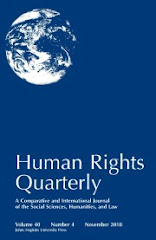The notion of institutional coherence has dominated the agenda for reform of the United Nations (UN) in this century. Motivated by what he saw as the weakness of the fractured UN system, UN Secretary-General Kofi Annan led an ambitious reform program throughout his term of office (1996-2005) seeking to ensure greater UN effectiveness through streamlining institutional functions. This concern has been inherited by Secretary-General Ban Ki Moon. A significant development in the reform process has been the creation in 2010 of the UN Entity for Gender Equality and the Empowerment of Women, known as UN Women, which came into operation on January 1, 2011. UN Women incorporates four existing parts of the UN system dealing with women and has been styled as the new UN “gender architecture.” In this article we consider the implications of this new structure for the situation of women worldwide from the perspective of international law. Is UN Women simply a bureaucratic rearrangement or is it greater than the sum of its parts?
Monday, July 15, 2013
Charlesworth & Chinkin: The Creation of UN Women
Hilary Charlesworth (Australian National Univ. - Law) & Christine Chinkin (London School of Economics - Law) have posted The Creation of UN Women (Max Planck Yearbook of United Nations Law, forthcoming). Here's the abstract:





